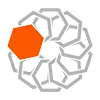Advanced looks: what is computer vision
Computer vision field
The ever-increasing interest, on behalf of governmental and industrial entities, in investing on Computer Vision solutions, to be integrated into their production and operational systems in order to optimize the different process phases, is manifested by the computer vision market value, attested at 15 billion dollars in 2022 and projected to reach 82,1 billion dollars by 2032, with growth of 18.7% from 2023 to 2032. Although industrial applications are in high demand, artificial intelligence finds employment and considerable … in different application areas, from automotive to medical, but also and especially in social and security in order to support and flank people in everyday life.
Artificial intelligence, computer vision and machine learning
Within the wide filed of study of artificial intelligence (AI), computer vision identifies computer’s ability to analyze and extract meaningful information from images and videos. Algorithms and templates developed in this area enable computers to replicate functions and processes of the human visual apparatus. Although this artificial intelligence algorithms have existed in different forms since the ’60s, the progress in Machine Learning in the last 10 years, just as the considerable steps ahead in data storage, in computational skills and in high quality input devices at low cost, have brought remarkable improvements in software’s ability to explore this kind of contents.
How computer vision works
In computer vision, elaborations involve visual contents like images, videos, icons and an other graphic representation that’s made of pixels. Even though it might look like a simplified system to recognize objects, people and animals in a single image or in a sequence (videos), computer vision allows to extract useful information, at increasingly higher levels of understanding and abstraction, so that they are further elaborated. Specifically, it’s about extracting meaningful datas reconstructing a context around the image.
In order to work accurately, Computer Vision system need to be trained with a great quantity of images that, appropriately labelled, will be forming the dataset. Computer Vision templates can carry out more or less in-depth investigations on an image, depending on the techniques and the used network, on the image characteristics and on the considered kind of task. This kind of software applications allow to process images and video frames analyzing the content through mathematics algorithms.
The steps of the processing
The complete process, which is quite complex, begins with the capture of the image and the related preprocessing to improve its quality and ends with the interpretation of the results and the consequent action. The two main intermediate steps of the process include:
- the extraction of the characteristics, when an algorithm analyses the pixels of an image to identify specific characteristics (colors, shapes and texture) of the objects and faces within it; and
- classification, during which the characteristics extracted from the frame are compared with known models. If a certain threshold in between analyzed image/frame and known model is exceeded, the software returns the matches and “cuts” the images in regions or groups with similar properties
Tasks that can be performed
Depending on the action that has to be developed, you can choose one or multiple of the possible tasks available. Among these, the most used are:
- Image Classification, that is the analysis of image content and the attribution of a label
- Object Detection, where the identification of one or more entities in an image happens; and
- Semantic Segmentation, that is the division of the image into sections
With the evolution and the improvement of these templates, new tasks such as Pose Estimation, Face Recognition, Action Recognition and Emotion Recognition are implemented in software applications, in order to be integrated in various “smart” technological solutions.
Computer Vision, through the analysis and the interpretation of images and videos, thus offers increasingly advanced solutions that go from industrial areas to social and sanitary, promoting a considerable impact on the quality of life and on the efficiency of industrial processes.


